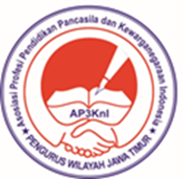Laman Web sebagai HWO (Home Work Online) dalam E-Learning
DOI:
https://doi.org/10.24269/dpp.v8i2.2145Abstract
This research aims to develop and create an innovation in the world of education, namely the use of WEB pages that are used as online PR media. This research method uses research and development methods. The results in this study are found that the WEB page is very innovative when used as a medium in online homework, because teachers can monitor students who are learning or not. The novelty in this study is that the use of WEB pages as a homework media or homework has not been used in Indonesia. In this WEB page students cannot see the answers of other students, because this WEB system is confidential. One student has their own identification number to access this WEB, so it allows students to not be able to see their friends' answers. In addition, parents can monitor student learning activities while at school and their grades directly through the WEB. And can be done clinics between teachers and parents of students when students at school make mistakes.
References
Brahim, B., & Lotfi, A. (2018). A Traces Based System Helping to Assess Knowledge Level in E-learning System. Journal of King Saud University-Computer and Information Sciences. doi:10.1016/j.jksuci.2018.10.008
Chen, P.-S. D., Lambert, A. D., & Guidry, K. R. (2010). Engaging online learners: The impact of Web-based learning technology on college student engagement. Computers & Education, 54(4), 1222–1232. doi:10.1016/j.compedu.2009.11.008
Chen, H.-R., & Tseng, H.-F. (2012). Factors that influence acceptance of web-based e-learning systems for the in-service education of junior high school teachers in Taiwan. Evaluation and Program Planning, 35(3), 398–406. doi:10.1016/j.evalprogplan.2011.11.007
Cook, D. A. (2007). Web-based learning: pros, cons and controversies. Clinical Medicine, 7(1), 37–42. doi:10.7861/clinmedicine.7-1-37
Faridi, Abdurrachman. 2009. “Inovasi Pembelajaran Bahasa Inggris Berbasis ICT dalam Rangka Meningkatkan Mutu Pendidikanâ€. LEMBARAN ILMU KEPENDIDIKAN, 38 (1): 59-67.
Huda, Miftakhul. 2018. “Blended Learning: Improvisasi dalam Pembelajaran Menulis Pengalamanâ€. Lensa: Kajian Kebahasaan, Kesusastraan, dan Budaya, 8(2):117-130. DOI: https://doi.org/10.26714/lensa.8.2.2018.117-130.
Irawan, Yudie; Nanik Susanti; Wiwit Agus Triyanto. 2015. “Analisa dan Perancangan SistemPembelajaran Online (E-learning) pada SMK Mambaul Falah Kudusâ€. Jurnal Simetris, 6 (2): 345-352.
Islamiyah, Mufidatul; Lilis Widayanti. 2016. “Efektivitas Pemanfaatan E-learning Berbasis Website terhadap Hasil Belajar Mahasiswa STMIK Asia Malang pada Mata Kuliah Fisika Dasarâ€. Jurnal Ilmiah Teknologi dan Informasia ASIA (JITIKA), 10 (1): 41-46.
Ismail, A., & Kuppusamy, K. S. (2019). Web Accessibility Investigation and Identification of Major Issues of Higher Education Websites with Statistical Measures: A case study of college websites. Journal of King Saud University - Computer and Information Sciences. doi:10.1016/j.jksuci.2019.03.011
Khamidah, Kun; Ramadian Agus Triyono. 2013. “Pengembangan Aplikasi E-learning Berbasis Web dengan Php dan My Sql Studi Kasus Smp n 1 Arjosariâ€. Indonesian Jurnal on Networking and Security (IJNS), 2 (2): 1-7.
Kusmana, Ade. 2011. “E-leraning dalam Pembelajaranâ€. Lentera Pendidikan, 14 (1): 35-51.
Nasution, Taruna. 2015. “Penerapan Metode Web Based Learning sebagai Solusi Pendidikan yang Efektif dan Efisienâ€. Jurnal TIMES, IV (2): 49-52.
P Belina, Elda; Fakruddin Rizal Batubara. 2013. “Perancangan dan Implementasi Aplikasi E-learning Versi Mobile Berbasis Androidâ€. SINGUDA ENSIKOM, 4 (3): 76-81.
Sampson, D., Kinshuk, Jemni, M., & Chen, N.-S. (2014). Guest Editorial: Current Advances in Digital Learning Technologies. Journal of King Saud University-Computer and Information Sciences, 26(1), 1–3. doi:10.1016/j.jksuci.2013.11.036
Sugiyono.2012. “Metode Penelitian Kuantitatif Kualitatif dan R & Dâ€. Bandung: Penerbit Alfabeta.
Sugiyono. 2015. “Metode Penelitian Pendidikanâ€. Bandung: Penerbit Alfabeta.
Suharyanto, Adele B. L. Mailangkay. 2016. “Penerapan E-learning sebagai Alat Bantu Mengajar dalam Dunia Pendidikanâ€. Jurnal Ilmiah Widya, 3 (4): 17-21.
Sunoto; Arif Fadillah. 2014. “Penerapan Media Informasi Berbasis Web pada Dinas Pertambangan dan Energi Kota Samarindaâ€. Jurnal Teknologi & Informatika Samarinda, 1(1): 1-73.
Srivastava, B., & Haider, M. T. U. (2017). Personalized Assessment Model for Alphabets Learning with Learning Objects in E-learning Environment for Dyslexia. Journal of King Saud University-Computer and Information Sciences. doi:10.1016/j.jksuci.2017.11.005
Yazdi, Mohammad. 2012. “E-learning sebagai Media Pembelajaran Interaktif Berbasis Teknologi Informasiâ€. Jurnal Ilmiah Foristek, 2 (1): 143-152.
Zaiane, O. R. (2002). Building a recommender agent for e-learning systems. International Conference on Computers in Education. Proceedings. doi:10.1109/cie.2002.1185862
Downloads
Published
Issue
Section
License
Copyright
Authors who publish their manuscripts in this journal agree to the following terms:
- The copyright on each article belongs to the author.
- The author acknowledges that Jurnal Dimensi Pendidikan dan Pembelajaran has the right to be the first to publish under a Creative Commons Attribution 4.0 International (Attribution 4.0 International CC BY 4.0) license.
- Authors may submit articles separately, arranging for the non-exclusive distribution of manuscripts that have been published in this journal to other versions (e.g., sent to the author's institutional repository, publication into books, etc.), acknowledging that the manuscript was first published in the Jurnal Dimensi Pendidikan dan Pembelajaran.
Â
License
Use of the article will be governed by the Creative Commons Attribution license as currently published under the Creative Commons Attribution 4.0 International License (Attribution 4.0 International (CC BY 4.0).
Â
This license permits anyone to copy and redistribute this material in any form or format, compose, modify, and make derivatives of this material for any purpose, including commercial purposes, as long as they give credit to the author for the original work.



_001.jpg)



